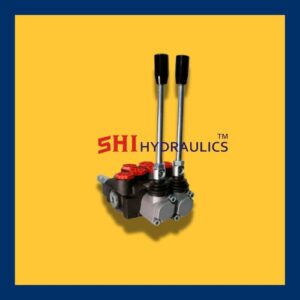Adaptors
Hose Adaptors
Design and Construction of Adaptors
Hose adaptors are engineered with precision to meet the demands of various systems. Their construction
- Materials:
- Steel: Ideal for high-pressure and high-strength applications, commonly used in hydraulic systems.
- Stainless Steel: Provides excellent resistance to corrosion and is suitable for harsh environments or chemical exposure.
- Brass: Known for its corrosion resistance and ease of machining, suitable for medium-pressure systems.
- Aluminum: Lightweight and corrosion-resistant, preferred for applications where weight reduction is crucial.
- Plastic or Composite: Cost-effective and lightweight, used for low-pressure or non-corrosive environments.
- Design Features:
- Threaded Ends:
- Barbed Connectors:
- Quick-Connect Mechanisms:
- Swivel Joints: Prevent kinking and reduce stress on hoses by allowing rotational movement.
- Sealing Mechanisms:
Types of Hose Adaptors
Hose adaptors are available in various types, each designed for specific purposes. Common types include:
- Straight :
- Connect hoses or fittings in a straight alignment, maintaining consistent fluid flow.
- Elbows:
- Feature angled connections, such as 45° or 90°, to accommodate directional changes in fluid routing.
- T-:
- Allow fluid to split or merge in systems with multiple flow paths, providing flexibility in design.
- Reducing :
- Enable connections between hoses or fittings of different diameters, accommodating changes in system size.
- Swivel :
- Allow rotational movement between components to prevent twisting and reduce wear.
- Quick-Disconnect :
- Facilitate rapid connections and disconnections, commonly used in systems with frequent maintenance or equipment changes.
- Specialized :
- Designed for unique applications, such as chemical resistance, high-temperature tolerance, or specific thread patterns.
Applications
Hose adaptors are integral to a broad spectrum of industries and applications:
- Hydraulics:
- Used in construction machinery, agricultural equipment, and industrial systems to connect hydraulic hoses and components securely.
- Pneumatics:
- Facilitate air flow in systems such as air compressors, pneumatic tools, and automated machinery.
- Automotive:
- Commonly used in fuel lines, braking systems, and cooling systems for efficient fluid transfer.
- Oil and Gas:
- Critical in connecting high-pressure pipelines and hoses in drilling rigs, refineries, and petrochemical plants.
- Water Systems:
- Employed in irrigation, plumbing, and municipal
- Manufacturing:
- Used in machinery and equipment to connect hoses for lubrication, cooling, or fluid delivery systems.
Advantages
Hose adaptors offer numerous benefits that enhance the efficiency and functionality of fluid transfer systems:
- Versatility:
- Available in a wide range of sizes, materials, and configurations to suit diverse applications.
- Ease of Installation:
- Designed for straightforward installation, often requiring minimal tools or expertise.
- Durability:
- Engineered to withstand high pressures, extreme temperatures, and harsh environmental conditions.
- Leak Prevention:
- Precision design and effective sealing mechanisms ensure a secure and leak-free connection.
- Customization:
- Adaptors can be tailored to meet specific requirements, such as unique thread types or material in compatibility.
- Cost-Effectiveness:
- Allow the integration of different components without the need for costly system modifications.
Maintenance and Best Practices
To ensure the reliability and longevity of hose adaptors, proper maintenance and handling are crucial:
- Regular Inspection:
- Check adaptors for signs of wear, corrosion, or leaks. Replace damaged components promptly.
- Use Compatible Materials: Select adaptors made from materials that match the fluid type and environmental conditions.
- Avoid Over-Tightening:
- Excessive tightening can damage threads or compromise the seal.
- Protect from Damage:
- Shield adaptors from physical impacts, abrasion, and exposure to corrosive chemicals.
- Follow Manufacturer Guidelines:
- Adhere to installation and maintenance recommendations for optimal performance.
-
Conclusion
Hose adaptors are indispensable components in.Their diverse range of designs and materials makes them suitable for various industries, from hydraulic systems to automotive and manufacturing applications. By selecting the appropriate adaptor and maintaining it properly, operators can ensure efficient, safe, and reliable operation of
Related Products
Related products
Customer Reviews
“A review from a customer who benefited from your product. Reviews can be a highly effective way of establishing credibility and increasing your company's reputation.”
Customer Name
“A review from a customer who benefited from your product. Reviews can be a highly effective way of establishing credibility and increasing your company's reputation.”
Customer Name







